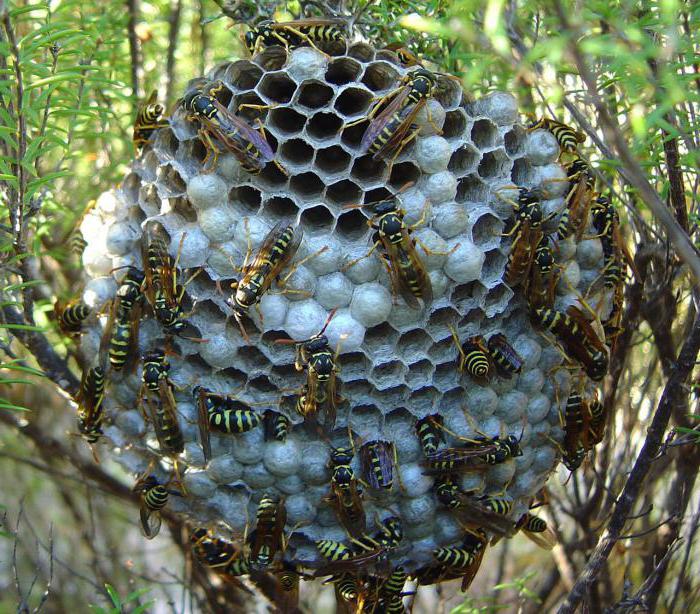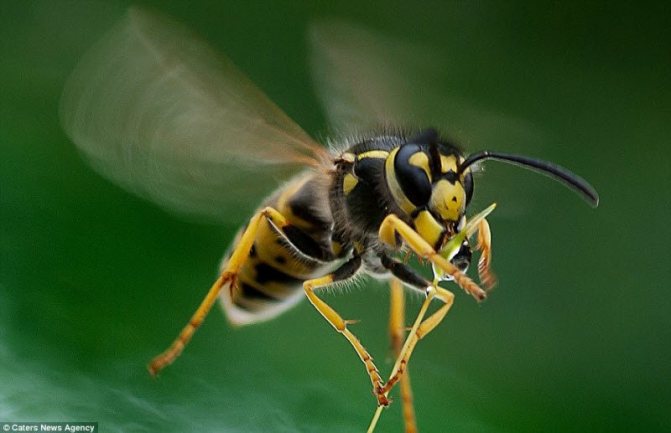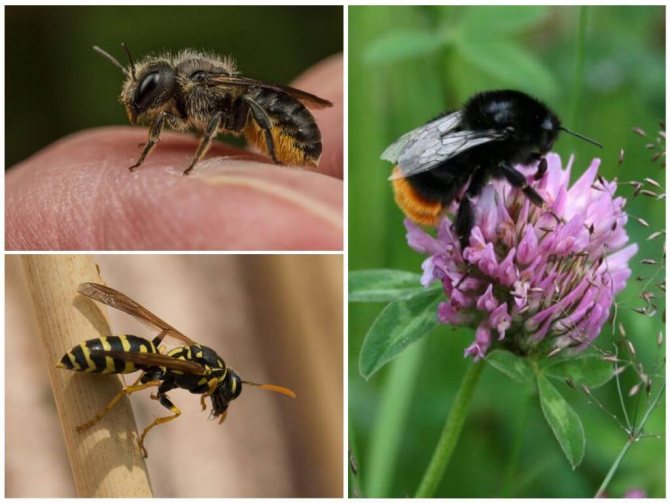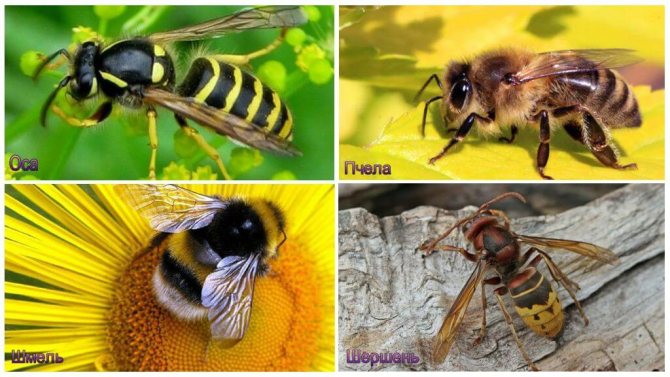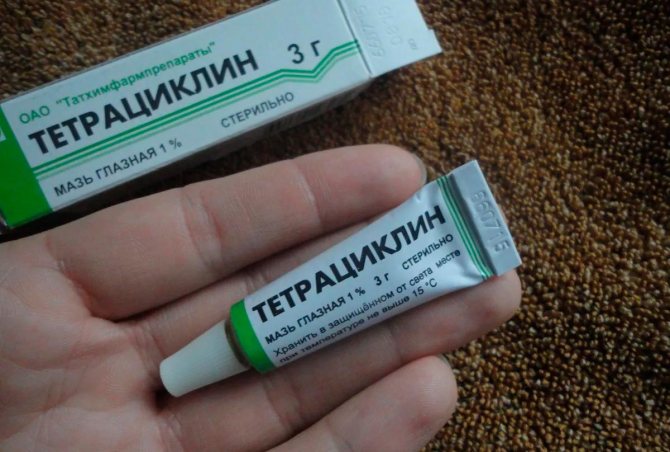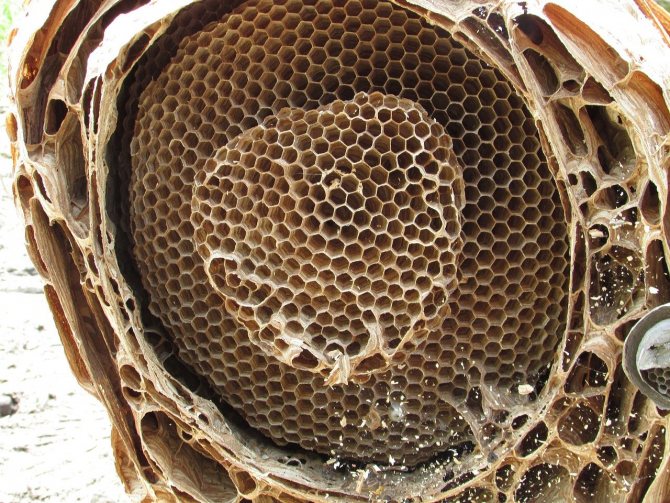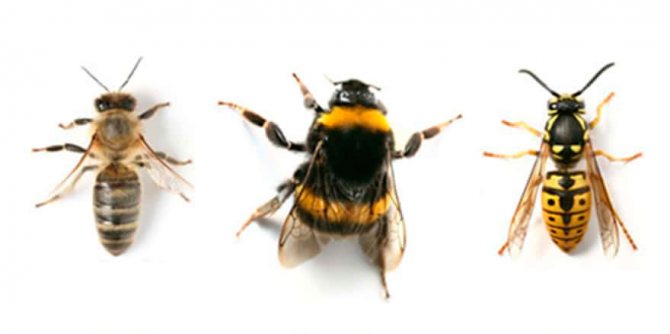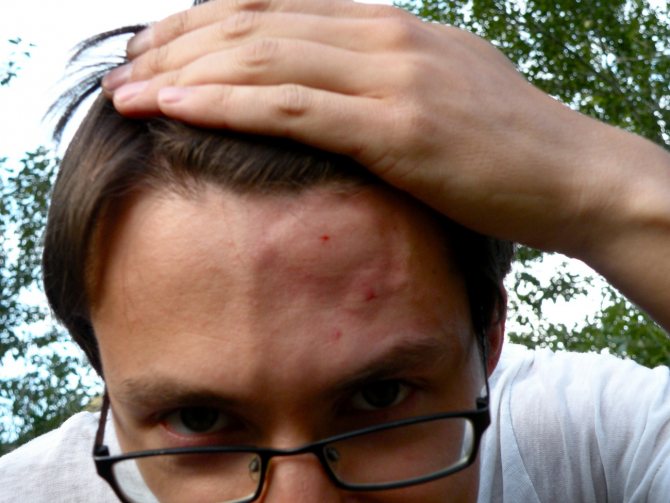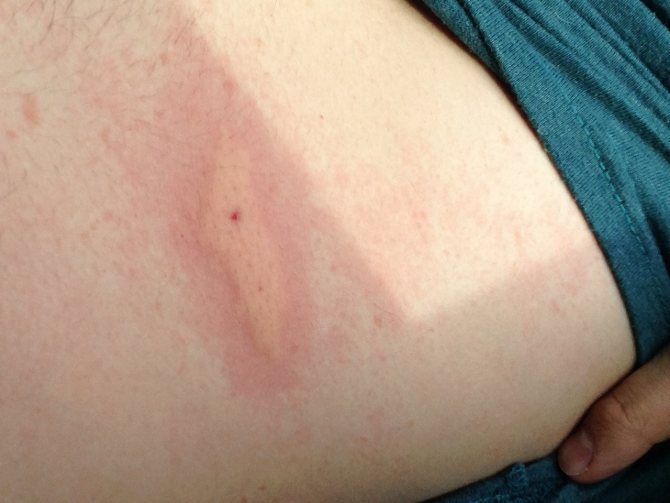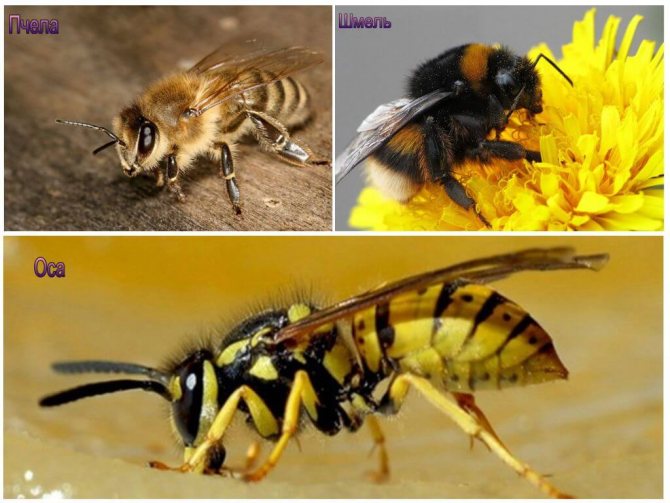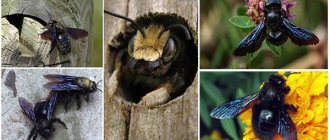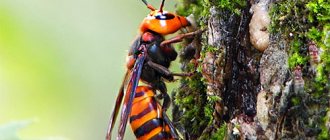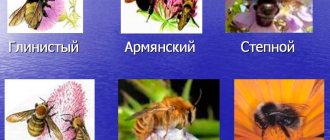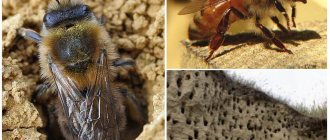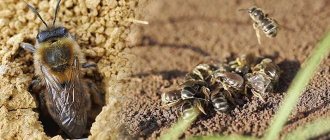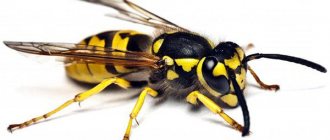"Beekeeping" What is the difference between wasps and bees, bumblebees and hornets
0
695
Article rating
Meeting with stinging insects is inevitable in the warm season, especially outside the city. Honey bees are usually friendly and only sting when threatened. Hornets and wasps are more aggressive. Hornets, wasps, bees, bumblebees differ from each other in appearance and behavior.
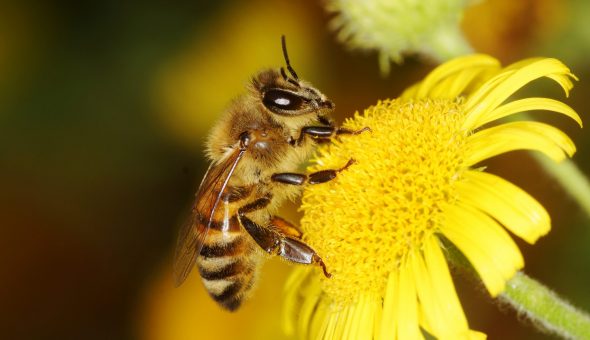
Bee
Wasp, bee, bumblebee, hornet - differences
Representatives of the insect family have both similarities and significant differences. All of them fly, buzz and pose a threat in the form of a bite with the release of a toxic substance. It must be understood that insects attack in the event of a threat to life and in other cases are not dangerous.
The bees are quite calm, hardworking, busy all day collecting nectar and pollen. In the hive, there is a round-the-clock work on the construction of honeycombs, feeding the young generation, ventilation, processing and storage of the collected product. The life span of a worker bee is short, about a month, but with the rapid development of the young generation, it is imperceptible to those around it.
Socket device
Bees build their hive of wax (they allocate it themselves), making strictly symmetrical honeycombs inside. Domestic bees live in special houses that beekeepers build for them. A hive of wild bees can be located in a hollow of a tree or in a crevice of a sheer cliff.
Wasps build their home from parchment, which is made by chewing wood or other plant cellulose. Their hive has a round shape, it is gray in color, looks like paper. Wasps attach the hive to tree branches or ceilings of little-visited buildings, and sometimes they arrange it in the ground.
The nest of bumblebees is called the bombidarium, insects arrange it in the holes of small animals, hollows, abandoned bird nests. The first cells of their nest bumblebees, just like bees, build their wax. For the construction of subsequent cells, they use capsules of already hatched larvae.
What is the difference between a bumblebee and a bee
What to do if bitten by a bumblebee
Regardless of the similarities between bees and bumblebees in wing structure, there are many factors that differentiate them. The bumblebee and the bee are close relatives. Their habitat is very extensive. There are about 300 species of bumblebees living throughout the continents. A distinctive feature of this species is the shiny covering of the female's hind legs from fold to edge, covered with long hairs, which are a basket for collecting pollen. The abdomen is round, not bent, the segments are rigid, the organs of the reproductive system are dark in color. The internal structure of the tip is tubular. The poison passes through this channel after the sting penetrates under the skin, the upper structure of which is without notches, due to which the injections are made repeatedly, without harm to the insect itself.
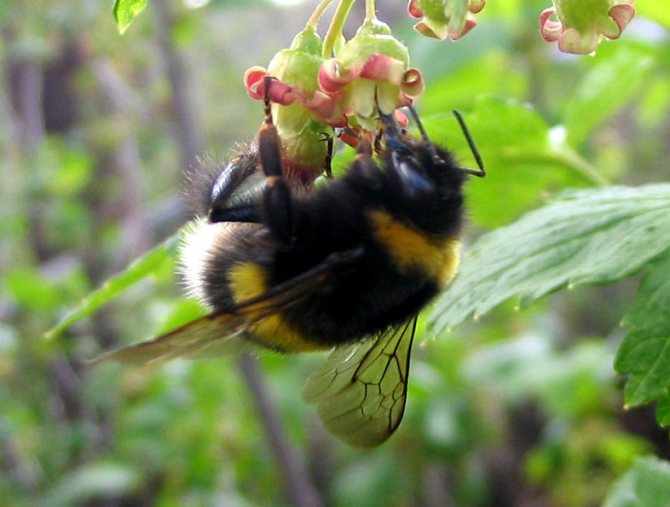

About 300 species of bumblebees from about 50 subgenera are known in the world
The family of bees has more than 20 thousand species, many of which have not been studied. They are the main pollinators and collectors of pollen, honey producers. There are three pairs of legs on the abdomen, with villi on the inside. On the hind legs, baskets are formed from the villi for collecting pollen. The abdomen consists of dense segments, bent downward.The sting is empty inside, the top cover of the sting is notched, which, when bitten, are caught by barbs over the edges of the puncture. After the separation of the sting with a particle of the abdomen, the insect soon dies.
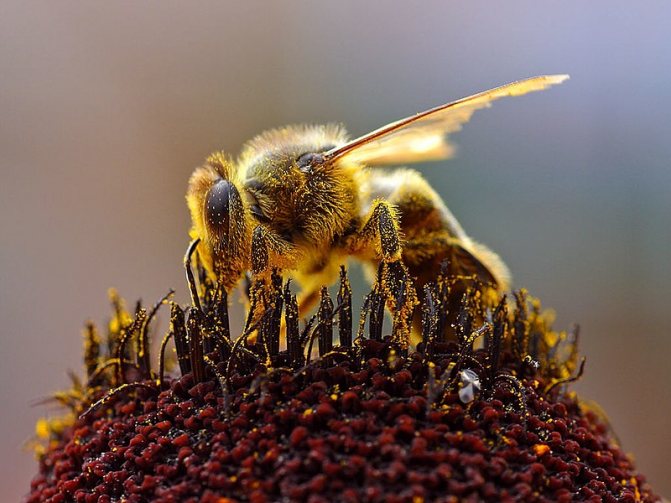

There are about 21 thousand species and 520 genera of bees
The difference between a bee and a bumblebee can be determined visually:
- A bumblebee is twice as large as a bee, its body is rounded.
- By coloring, a bumblebee is brighter than a bee.
- Bees are used on farms to collect pollen and pollinate plants in gardens and fields in open areas, bumblebees - to pollinate plants in greenhouses.
- Sting application - The bumblebee uses its prick many times. The bee dies only once.
Behavior


The bumblebee is distinguished by the fact that he prefers to fly apart, and if disturbed, he will simply fly away and that's it.
A bee, even if it is alone, can curl around an object. Finding out how dangerous this object is for her. However, she is unlikely to be able to bite, if not waving her arms. Bees will attack in any case if they disturb the peace of the family or the hive.
The wasp is considered the most annoying insect and is able to bite in the most harmless situation. Moreover, a wasp sting is characterized by sharp and severe pain.
Hornet and wasp - differences
How is a hornet different from a wasp? The hornet is the largest representative of the wasp family. Its body length is more than five centimeters. The difference between a hornet and a wasp includes not only size, but also body structure. The head is large, wide at the back of the eyes, the chest area is large, wide, dark in color. The belly has the same structure as that of the wasp, but much larger.


The largest representatives of the hornet genus (Vespa mandarinia) are up to 55 mm in length
Bee and wasp
The difference between a hornet and a wasp lies in the use of material to build a nest:
- The wasp uses thin fibers of trees for construction, moistens the secretions that make up saliva, chewing them to the desired state with saliva, and uses them to build combs. In appearance, the nest resembles a round roll of paper with numerous parallel layers, the honeycomb of which is on the lower side of the layer.
- The hornet uses the same construction method, but uses material for use from rotted fibers of trees and stumps. This material gives the nest a dark, brown tone when used.
The hornet settles throughout the territory of the countries, except for the far north, in many areas it is considered an endangered species. The wasp also lives throughout the territory, except in the northern regions, but is considered a useless, stinging insect.
Important! The hornet bite is very painful, with the release of a paralytic poison of a strong concentration. In people with allergic diseases, the poison causes anaphylactic shock, without emergency help a person can die.
Wasps are distant relatives of bees and ants. They do not take care of the offspring, once they lay an egg in a cell, seal it and throw it away.
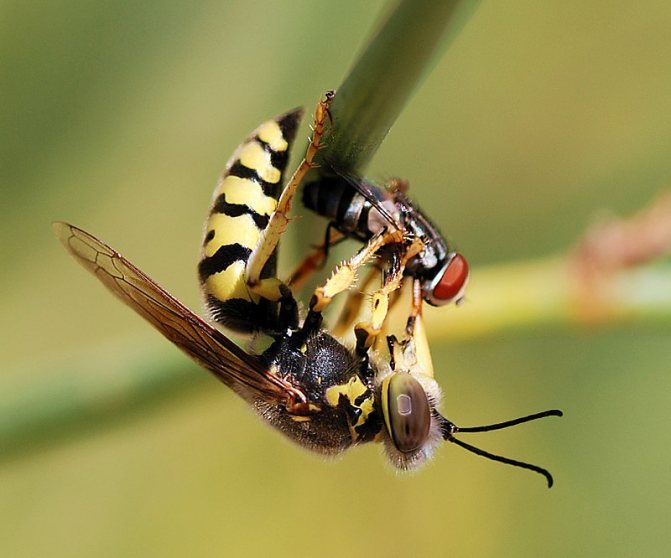

Wasp with prey
Nests are built in any suitable places for this:
- between branches;
- in burrows underground;
- in buildings, in the form of a round roll of paper.
The hornet sting reaches up to 5 mm in length. It attacks a person only in case of danger to his life, applying a bite with his jaws, after which he can sting.
Important! The wasp, by the nature of its aggressiveness, bites and stings simultaneously several times in a row.
The diet of both wasps and hornets includes:
- nectar;
- fruit juice, pollen;
- tree sap;
- insects - caterpillars and spiders.
Wasp giants
The danger increases if a person or animal is attacked by a hornet - the largest species of the wasp family. In temperate climates, the worker reaches 25 mm, and the uterus -35 mm.
- Nests can be found near human habitation under the roofs of houses or sheds.
- They are one hundred percent predators, feed on other arthropods and feed the larvae with them.They also include fruit juice in their diet, do not ignore honey. For this reason, adults cause great damage to apiaries, destroying their workers and robbing hives.
- The severe consequences of injecting poison are not explained by its quantity, but by increased allergenicity. Only females are equipped with a three-millimeter sting, which can sting repeatedly. The poison contains histamines, toxins, acetylcholine and other components that irritate nerve fibers, palpitations and severe pain. An allergic reaction in this case is accompanied by severe edema and can have unpredictable consequences.
- They are much less common than the same Vespids, and are less aggressive, they do not attack first. However, such a neighborhood in a country house or in the country is very undesirable - an accidentally disturbed nest can turn into a tragedy.
- There is nothing useless in living nature - each species, including the predatory one, occupies the necessary ecological niche. And yet, if a wasp, and even more so a hornet colony, was found near human habitation, all measures must be taken to get rid of it.
How bees differ from wasps and bumblebees
Common hornet
Bumblebee and wasp have a significant difference in color, in the wasp it is defiant, bright yellow. The bumblebee is large, the body is rounded, fluffy, darker than the wasp in color. Bees and bumblebees feed on pollen and nectar, sucking it in with their proboscis. Wasps are omnivorous insects - they consume pollen, nectar, fruit juice, tree sap, small insects, attack bee hives using sharp jaws, which are used when biting.
How to distinguish a hornet from a wasp uterus
The main visual difference is in size.
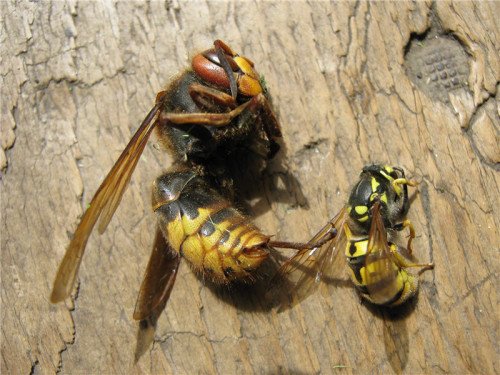

For comparison: 3 cm - uterus, 2 cm - normal
Insects of the family wasp have a thin waist, and a long abdomen. The hornet has a waist not as thin as in a wasp, the size of the head and thoracic region and abdomen is much larger than that of a wasp and even a wasp uterus, which is the largest in an aspen swarm. The color stripes of the wasp are bright yellow, alternating, clearly defined edges along the junction line.
Important! The hornet has an orange tone in the alternation at the beginning of the abdomen and the color transition along the lines is not so clear.
The nature of the flight
During the flight, wasps often make jerky movements, now and then hovering in one place for a couple of moments. They are able to move almost at lightning speed a decent distance from the place where they just were. The exception is large wasps (scolias, hornets), their movements are not so fast.
The flight of bees is smoother, while bumblebees, on the contrary, fly hard, rather slowly and with a low hum. For a long time, it was believed that bumblebees generally fly contrary to the laws of aerodynamics.
Who is stronger: wasp or bumblebee
Insects differ in the nature of their behavior - the bumblebee is a calm insect and uses its weapon in extreme cases, the wasp is very aggressive and attacks an enemy larger than it. Wasps often plunder bumblebee nests, eating their reserves, using sting and jaw bites when attacking. A healthy family of bumblebees easily copes with robbers, but if the family is weak, then a swarm of hornets wins, which can kill not only working bumblebees, but also the entire young generation of the bumblebee family.
Sting


A single-use bee sting if it bites a person. Due to the presence of chipping, she is unable to pull it out of human skin. After being bitten, the bee dies, but if it bites some other creature, it can survive. A bee can be aggressive if you swing your arms around a lot.
As for wasps and bumblebees, they have reusable stings and they can bite a person more than once. In this case, the wasp can bite just like that if she doesn't like something. The most harmless creature in this regard is the bumblebee. In order for it to bite, you need to try very hard.
Where wasps and hornets winter
During the summer, wasps accumulate a large amount of nutrients and hibernate in winter, using the reserves of their body. Single individuals can hibernate under the bark of a tree, in tree hollows, in old destroyed stumps, in the crevices of outbuildings. Over the summer, the swarm can build a huge "paper" nest, but with the onset of autumn, the younger generation should seek refuge for the winter and not return to the old nest.
Hornets build a nest during warm days, raise young replenishment and accumulate nutrients for wintering. In early autumn, young females fly out of the nest to look for a partner. After fertilization, they settle in the cracks for wintering. With the onset of cold weather, working hornets close the exits from the nest and can feed on stocks and eggs that are laid throughout the season.
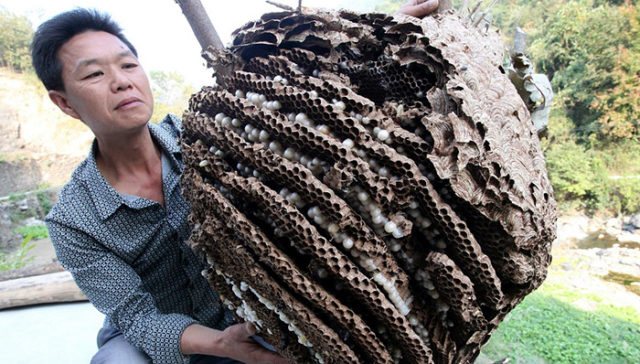

Hornets' dwellings are structures made of paper, which they make from young tree bark.
In severe frosts, the working hornets die, only the queen remains in the nest, which in the spring will lay new eggs and create a new swarm. Wintering is a suspended sleep until early spring. With the first positive heat readings, the female wakes up and looks for a place to build a nest, where she will lay eggs and hatch a new colony of hornets. Insects are considered an endangered species and are listed in the Red Book.
How to protect an apiary from unwanted guests
The first step in the outbreak of a war between a predator and a beekeeper is finding the insect nest. As a rule, they place their dwellings in quiet and peaceful places - for example, in a barn, in a tree or attic.
Thus, in accordance with whether the nest is in an open space or in a closed one, the method of its destruction is also chosen.
If you find a nest indoors, then the following method will suit you. Fill the bucket 2/3 full with water and raise it so that the nest is completely in the water - insects will die almost instantly.
There is another method by which you can evict unwanted neighbors - for this you need an ordinary bag in which a large amount of insect repellent chemicals have been sprayed - for example, the well-known Raptor or Dichlorvos.
If the nest is on a branch, just tie a bag on it, but if on a ceiling or other surface, secure the edges of the bag with tape or other adhesive.
The third method is the most severe and even, perhaps, bloodthirsty - the spray bottle is filled with a flammable substance (kerosene, for example), and the nest is sprayed from all sides and set on fire. Of course, such measures cannot be taken indoors!
We invite you to read: Large caterpillars in the ground
It may also happen that the hornets arrange their nest in the hollow of a tree - then you will have to fill the hollow with Karbofos and carefully fill the hole.
Whichever method you choose, remember that any manipulations with the nest can be done only in the evening and at night - that is during the period when insect activity is minimal. But even so, it is necessary to observe precautions - wear a beekeeper's hat and clothes that completely cover the body.
If it so happens that you did not find the nest either on the territory of the apiary or in its immediate surroundings, then the dwelling of the predators is located far enough away.
However, if a hornet or a wasp made one attack, they will definitely return. Therefore, you need to take care of creating traps for them.
Traps refer to preventive measures against nesting.
In order to make a trap with your own hands, you need an ordinary plastic bottle, beer and honey.
The first stage of creation is the manufacture of the body of the future trap.
To do this, the bottle is cut exactly in the middle, the lid is unscrewed and the upper part - inverted - is inserted into the lower one.At the second stage, a mixture for the bait is prepared - honey and beer are mixed and poured into a bottle.
The aroma of the bait solution is very attractive to insect pests, and therefore they will definitely try to taste it - however, after they fly into the bottle, they will not be able to get out of there.
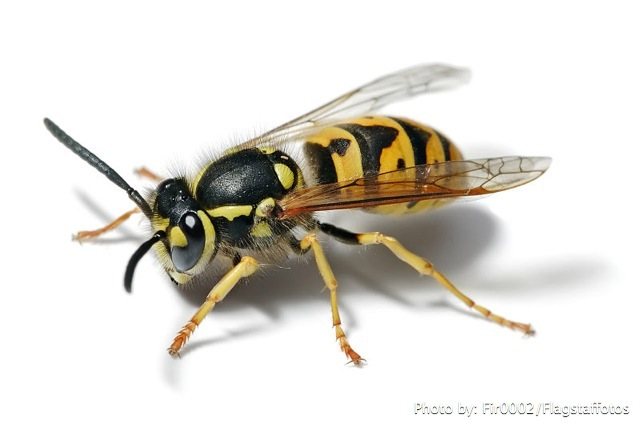

The best time to set traps is mid-spring. It was at this time that scouts from wasp and hornet nests begin to make their first flights.
What to do in case of a bite?
A hornet sting is more painful than a bee sting, especially since this large insect can repeatedly pierce a person's skin, injecting an additional portion of poison. The more massive the insect, the greater the dose of poison it will bring into the human body. Japanese and tropical species are more dangerous than Siberian and European ones. The poison contains toxins and their effects on humans are unpredictable. Sometimes substances can only irritate the nerve endings and cause pain, without poisoning the body. It all depends on the individual characteristics and health of the person.
How many people in the world die from the attack of these poisonous creatures? In Japan alone, there are about 100 deaths a year. Some people get off with pain after a bite, while others die from rapid allergic reactions. Asian insect venom causes suffocation, impaired coordination, loss of consciousness and anaphylactic shock. It is especially dangerous when the insect stings in the head and neck. You should know that the sting does not remain in the wound. In the first minutes after the bite, you can suck out the poison and spit it out. You can not drink alcohol - alcohol enhances the toxic effect of toxic substances.
There is no need to panic if the affected person only complains of pain at the site of the bite, but generally feels fine. In this case, wash the wound with soapy water and then treat it with a weak citric acid solution. You can wipe the affected area with Corvalol medicine. This will reduce pain. Hydrogen peroxide is also suitable for processing. After that, a piece of ice should be applied to the affected area and an antihistamine should be drunk (Suprastin, Fenistil, Loratadin, Zodak). These simple actions are enough to alleviate the condition of the victim.


It is necessary to monitor the patient's condition for at least a day. At first, he may feel bearable, and after a few hours, signs of intoxication will appear. Fever, headache, nausea, dizziness, darkening in the eyes, shortness of breath, lump in the throat, palpitations are symptoms of toxic damage to the body and the development of an allergic reaction. Urgent medical attention required.
Habitat
It is clear that the place of residence for domestic bees are hives built by man. Wild representatives of this family (wasps) prefer to build nests in tree hollows. Bumblebees look for more secluded places, building their houses in the ground, less often in birdhouses and tree trunks. Both are found in fields and in villages, they can also be found in city parks and botanical gardens.
Hornets build nests in cracks in rocks, in hollows and on tree branches, as well as under eaves of buildings. Wasps build them almost everywhere. The house of stinging insects can be located on the stems of plants, and in the branches of shrubs, and in the attics of baths, sheds or verandas. Biting off pieces of fibers from wood, they moisten them with their saliva, as a result of which the building material becomes a kind of thick paper.
If they suddenly disappear
Environmentalists around the world are sounding the alarm, pointing to a decrease in the number of bee and bumblebee colonies. If you imagine that wasps, bumblebees, bees suddenly disappeared, then the absence of the first is unlikely to be noticed by anyone. They will be replaced by other insect lovers and carrion. It doesn't really matter who will destroy the pests.However, one should not forget that, in addition to harm, wasps are beneficial, as well as their relatives.
But humanity will feel the disappearance of pollinators instantly. Without bees - pollinators of a significant part of fruit trees and shrubs and bumblebees working on clover and in greenhouses, humanity will suffer hunger. But what to do with the decline in the number of pollinators, scientists do not yet know.
External differences
The bee is distinguished by a discreet color, shaded black and yellow stripes. The body is shaggy, without a pronounced transition from the chest to the tummy, the legs are plump, black and shaggy, the jaws are small. The dorsum is black with a yellow coating; the posterior segment of the body has dark yellow stripes. The size of the worker and the queen bee is different.
The main difference between a wasp and a bee is the presence of a waist. It has a sharp transition from the sternum to the tummy, the body itself is smooth and elongated. It is distinguished from others by color: in wasps it is bright and contrasting, the back is black, with yellow blotches, the posterior segment of the body is striped, black and yellow. The paws are yellow, the jaws are massive.
The bumblebee is several times larger and more furry than bees and wasps. He has wide red stripes on his brown body. There are also pure black bumblebees. The differences between the female and the male are in the presence of antennae in the latter. The bumblebee, unlike other species, is a universal pollinator, its nests must be protected.
Hornet
The largest of all the insects described above. He has powerful jaws and a large body, a striped black and yellow color, hornets grow up to 5 cm, uterus are usually larger than males. Differs in body structure from a wasp in less grace. Although the hornet is a close relative of the wasp, there are individuals without stripes, with a uniform brown or orange color.
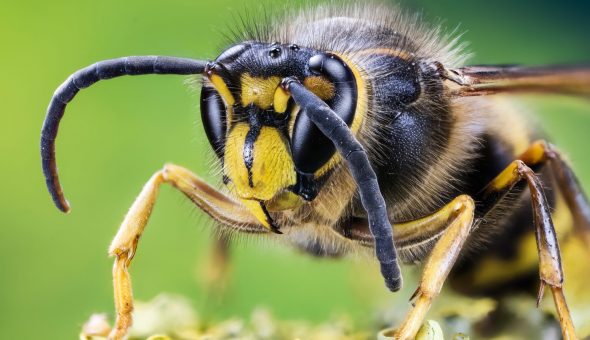

Hornet
The difference in size, body structure is significant.
Visually, the appearance of the wasp is elongated, thin. The abdomen, chest are connected by a jumper, thanks to which the concept of "wasp waist" arose among the people. The body is smooth, slightly lowered in the abdomen and head. The head, front of the chest is black. The belly of a bright, contrasting color - wide black and yellow stripes. The wings are thin, transparent, with small antennae on the head.
How does a wasp differ from a bee - the size, the structure of the sting. Wasps weapons are oblong, without notches. It resembles a needle. Thanks to this feature, it easily sticks under the skin, and can be easily removed. In one act of attack, the insect stings up to 5 times. Thanks to this feature, you can identify the attacker, recognize the enemy. The wasp is able not only to sting, but also to bite. If the chitinous cover of the insect is too dense, it is pierced with powerful jaws.


Bee and wasp
Outwardly they look different, similarities in color, coloration. They have a rounded shape. A noticeable difference between a wasp and a bee is in thin, elongated limbs. They have massive black tarsus, covered with numerous small hairs. The size of the body is about 1 cm. The jaws are small, antennae and large eyes are clearly visible on the head.
The head is small, yellow-black. The abdomen is shaggy - covered with relatively long dense hairs. The abdomen is striped. Unlike wasp representatives, the stripes are narrow, alternating black, bright orange. Covered with yellow villi on top. A photo of the differences between a bee and a wasp can be seen below.
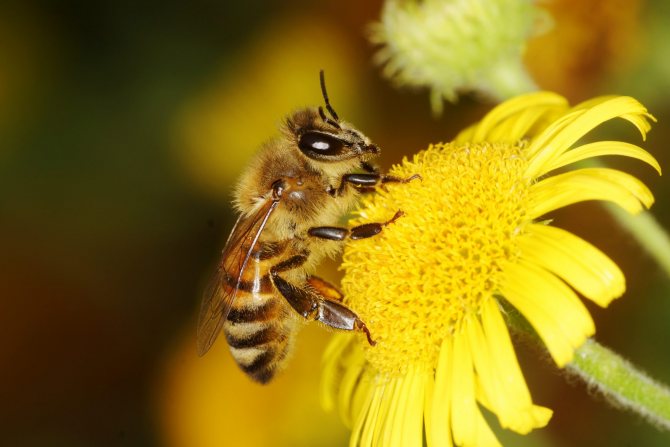

You can compare a bee and a wasp by the sting, which differs significantly. In bees, the weapon of defense consists of barbs. It resembles a saw. Plugs into the skin, firmly fixed. Notches do not allow the bee to get the sting back, with a sharp jerk, a part of the abdomen comes off, and soon the bee dies. Photo of a bee and a wasp in the process of being bitten further.
Fluffy creature. The appearance of this insect is not even a cause for concern. This is a slow, calm creature. The body is much larger, more massive, stockier than bees, wasps. Outwardly, it resembles a hairy lump. The stripes are yellow-black, wide. The head is lowered to the bottom. Some bumblebee species are completely black or have bright reddish stripes.


Bee, bumblebee and wasp
A close-up photo of a wasp and a bee can be seen below.
Just wondering
Finally, some interesting facts about bees, wasps and bumblebees:
- After fertilization, the queen bees attack the drones and drive them out of the hive forever. “On the loose” drones quickly perish, as they cannot get their own food on their own.
- Wasps make honey, but few have seen it. This almost microscopic droplet at the bottom of a new cell is needed by the larva only for the first time, until it becomes able to consume protein food.
- Bumblebees wake up earlier than everyone else and collect the nectar first.
- The hornet is a predator that prefers live prey.
- The worker bee is able to tell family members the way to the food source.
All these insects are very interesting, if you do not treat them as annoying and unnecessary creatures. They do more good than harm, and should not be destroyed unless absolutely necessary.
Nests
A family of real bees, in the absence of ready-made artificial hives and bumblebees, finds a suitable cavity and begins to build honeycombs there. Their nests do not have a definite shape, as they depend on the cavity in which the queen settled.
The most common and familiar to us real wasps, at the sight of which people are not mistaken in the insect's belonging, build nests on their own. In Russia, there are two types of hornets' nests: a vertically elongated top (this one is drawn in cartoons) and a curved "plate" of irregular shape. The “plate” resembles the core of a sunflower, from which the seeds were taken out.
Important!
The "elongated top" may turn out to be a hornet's nest.
Wasps build their nests from chewed cellulose glued together with saliva. The structure of the nest material strongly resembles thick paper.


Insect nests
Habitat
Bees can be found wherever there are flowering plants. You cannot see them in a hot desert or in places with a cold climate.
The most favorite place where bees like to settle are mountain crevices, abandoned burrows or hollows of large trees. They choose only reliable support for their hives. It is very good if there is a reservoir nearby. Better with running water - a river or stream, but not a swamp. The hive must be protected from strong winds.
The wasp's habitat is quite extensive. Mostly they can be found in the Northern Hemisphere. The largest number of wasps on Earth is concentrated here. These insects try to equip the nest closer to humans and trees. This allows them to easily and quickly forage and build nests and hatch larvae.
Where can you find a bumblebee? And where can you not meet him? The ability to maintain a high body temperature made it possible for the bumblebee to live even in the north. They reach Chukotka, Greenland and Alaska. And all thanks to interesting thermoregulation, which at the same time does not allow them to live in the tropics. Bumblebees are found in North America, Northern Eurasia and in areas with mountains. Nevertheless, two species of these insects were found, which took root in the tropics of Brazil.
Well, friends, that's all for now. We told you everything we knew about the differences between a bee and other insects. A small clarification - if you see a phrase of a different color in the text, then do not hesitate, click on it with the mouse. A new, more detailed article on this topic will open for you. If you have any questions or comments, write them in the comments. We will try to answer them if one of our other readers does not answer you faster.




